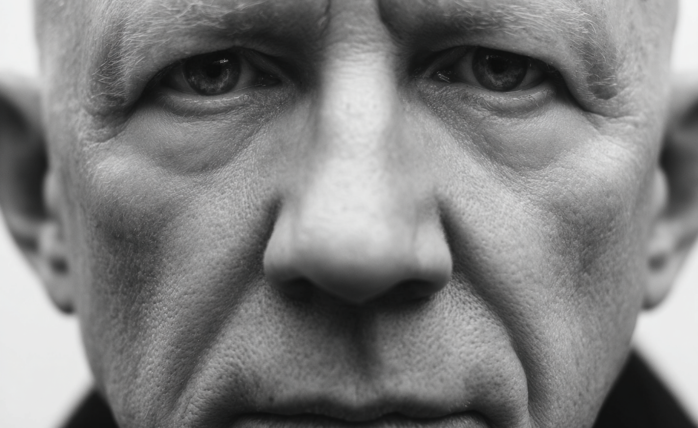Change Your Mindset
Here’s Why You Need to Make Motivation Personal

You put down your self-help book and you feel ready. You are ready to conquer any Herculean task that is standing in your way to success. You are transformed, and you cannot wait to show the world what you are capable of. The next day, you wake up early in the morning. You turn off your phone’s alarm clock with such energy you know you are going to smash the day.
A week passes by, and you are still smashing it. People around you start to notice. You are a changed man! Another week passes by, you feel a bit drained, but you soldier on. In the third week, you feel kind of sick of anything motivation related — what happened here?
I asked myself the same question countless times, and I came to the realisation that mass-produced motivation can only last so long. What happened is that you got a boost in motivation from the self-help book, but you did not achieve sustainable motivation; the one that lasts forever.
The only way you can stay motivated is to personalise your motivation. Make it as personal as possible. You must look at motivation from a bottom-up, not top-down, perspective.
In this article, I am going to show you how to do just that. You are going to learn a few tips on how you can personalise motivation, building it from the inside out.
1. Diagnose your strengths
The first step to personalise your motivation is to pinpoint and capitalise on your strengths.
What is your strong suit?
There are two ways to find the answer:
- Analyse the history of your achievements
- Ask people who know you well
For example, when I was a university student, I got the highest grade in public speaking. People also often told me that I had a good way with words (I am saying that humbly!). What does all this mean?
It means I have charisma. I am able to inspire others with my words. So, how can I use this to personalise my motivation?
Well, if I can inspire people with my words, I can inspire myself with them, too. I talk to myself every day. Whenever I run low on motivation, I use metaphors, similes and personification created from my own imagination to shake off whatever parasite that is sucking strength out of my soul. My words never failed me.
Pinpoint your strengths and capitalise on them.
2. Tap the power of personal symbolism
Symbolism is the use of symbols to represent ideas. For example, the cross is a symbol of redemption and sacrifice.
Motivation and success are the driving forces behind everything you do, and your strengths help you smash through challenges to reach your destination. So, why do you not give all this a concrete shape?
When you give what you believe in a concrete shape, it does not just become part of who you are. It becomes who you are. This gives motivation a whole new meaning.
For example, a few of my strengths are intensity, passion, physical energy, yearn for self-expression and somewhat deeply buried anger at the idea of anyone being better than me at what I do. I decided that the sun symbol perfectly represents who I am and how I overcome my moments of weakness.
I wear my sun necklace all the time. It is part of my motivation. It shows the world my motivation, and I love it when people ask me about it.
Here are a few other ways to draw on the power of motivational symbolism:
- Choose a symbol that best represents your motivational philosophy
- Create your own ID card. Your picture, name, symbol of your choosing and other information that matters to you should all be there.
- Rings, necklaces and bracelets with the symbol of your choosing are great ways to materialise your motivation
- Tattoos are also an option, but I do not recommend them. They are not easily disposable and as you progress in your motivation journey, what motivates and what does not motivate you may change drastically. You do not want to be rigid.
“When something is important enough, you do it even if the odds are not in your favor.” – Elon Musk
3. Ritualise your motivation
Another way to make motivation who you are, not just part of who you are, is to ritualise it. Make motivation a habit, not just something that you do ‘’from time to time’’.
Motivate yourself every day. Wake up in the morning and remind yourself of what matters to you. What you are doing is going to pay off one day. Visualise how you will feel when you achieve your goal and the things it will bring you: money, power, sex and fame. All what is between you and these things is hard and smart work.
I have my own personally-written motivation speech read every morning. The speech reflects my deepest desires. Nobody can unlock its massive power but me. I read it aloud and I feel the words reverberate in my soul.
Make motivation a habit.
4. Adapt, not adopt
While good motivation articles may provide guidance, they do not provide answers because only you can find them. People who write about motivation do not know you as well as you know yourself. Tailor mass-produced motivation articles to your own individual needs, experiences, tastes and intelligence.
For example, if a motivation article suggests that you do the task you dread the most in the morning while you are an afternoon person, you are not going to do it in the morning. You can see how a motivation article can provide you with an idea; do what you are scared of the most when you are at your best. However, ‘’when you are at your best’’ varies from individual to individual.
Adapt what you read to your uniqueness to concoct personalised motivation.
5. Take breaks and make them count
Ignoring breaks — I have been there. You would like to think that you are strong and resilient, and you probably are, but ignoring breaks is not going to get you anywhere. Just like muscles need rest to reduce lactic acid build-up after a hard workout, so does your motivation. However, you do not want to wait until you are burnt out. This mistake cost me a lot.
Make time for your break every week or every couple of weeks at max. A full day of rest is also part of your motivation because you will be looking forward to it when you are working hard.
Make your breaks count, too. No mobile phones or anything of the sort. You have been straining your eyes all this time looking at screens and documents. You need to give all of you a break on your free day. Light exercising is okay, but it should not exceed 20 minutes. Avoid anything and anyone that may deplete your will power reserves – including difficult friends.
Take breaks and make them count. You will come back stronger.
Conclusion
Personalised motivation is the most powerful motivation. It is motivation that is deeply attached to your idiosyncratic needs, tastes, experiences and logic. Mass-produced motivation articles provide nothing more than guidance. They are a starting point, not an answer to a deeply personal question; how can I be and stay motivated?
The secret is in the ingredients, not the recipe. The most powerful ingredients grow in one and one place only; you.
Life
10 Research-Backed Steps to Create Real Change This New Year
This New Year could finally be the one where you break old patterns and create real, lasting change.

Every New Year, we make plans and set goals, but often repeat old patterns. (more…)
Change Your Mindset
The Silent Skill That Makes People Respect You Instantly
What truly earns respect and why most people go about it the wrong way

Everybody craves respect but not everyone earns it. Some people believe that a title, years of experience, or a position of authority automatically entitles them to respect. (more…)
Change Your Mindset
How to Turn Your Mind Into Your Greatest Asset (Instead of Your Enemy)
The thoughts you feed your mind today quietly become the life you live tomorrow.

The human mind has two parts: the conscious mind and the subconscious mind. Both work together, but each has a very distinct role in shaping your life, decisions, habits, and results. (more…)
Did You Know
The Success Patterns You Inherited (And Didn’t Notice)
Your family history may hold the key to why you think, act, and feel the way you do today.

Who are you? Your experiences and your family’s narratives and legacies contribute to your identity. Your ancestry contains individual traits and forces that have been inherited over the years. It also carries the fights and victories of your forebears and older family members. (more…)
-

 Shift Your Mindset4 weeks ago
Shift Your Mindset4 weeks ago11 E’s That Define Every Great Leader And Why Most People Miss Them
-

 Did You Know4 weeks ago
Did You Know4 weeks agoThe Success Patterns You Inherited (And Didn’t Notice)
-

 Entrepreneurs3 weeks ago
Entrepreneurs3 weeks agoThe Essential Skills Every Entrepreneur Needs In 2026
-

 Business4 weeks ago
Business4 weeks agoThe Hidden Money Pit in Your Operations (and How to Use It)
-

 Change Your Mindset3 weeks ago
Change Your Mindset3 weeks agoHow to Turn Your Mind Into Your Greatest Asset (Instead of Your Enemy)
-

 Change Your Mindset2 weeks ago
Change Your Mindset2 weeks agoThe Silent Skill That Makes People Respect You Instantly
-

 Life2 weeks ago
Life2 weeks ago10 Research-Backed Steps to Create Real Change This New Year
-

 Tech2 weeks ago
Tech2 weeks agoWhat’s in a Name? How to Get Your Domain Right

























